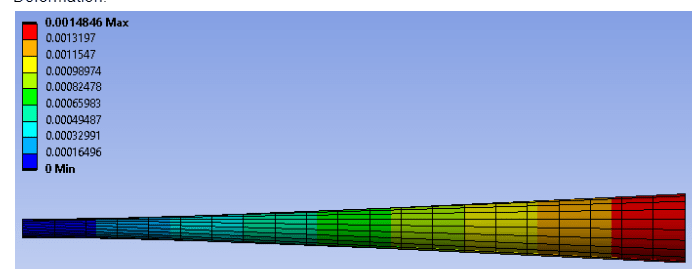For a section of a piece of coursework we need to analyse how a beam is deformed when subjected to torsion. My expectation would be that it simply twists, but the deformation diagram obtained from simulating this in Ansys shows a deformation which seems to suggest the cross-sectional area of the beam increases at the end where the torsion is applied.
Is this the expected behaviour, am I misinterpreting this deformation diagram, or is the simulation just completely wrong altogether?

Is this the expected behaviour, am I misinterpreting this deformation diagram, or is the simulation just completely wrong altogether?

